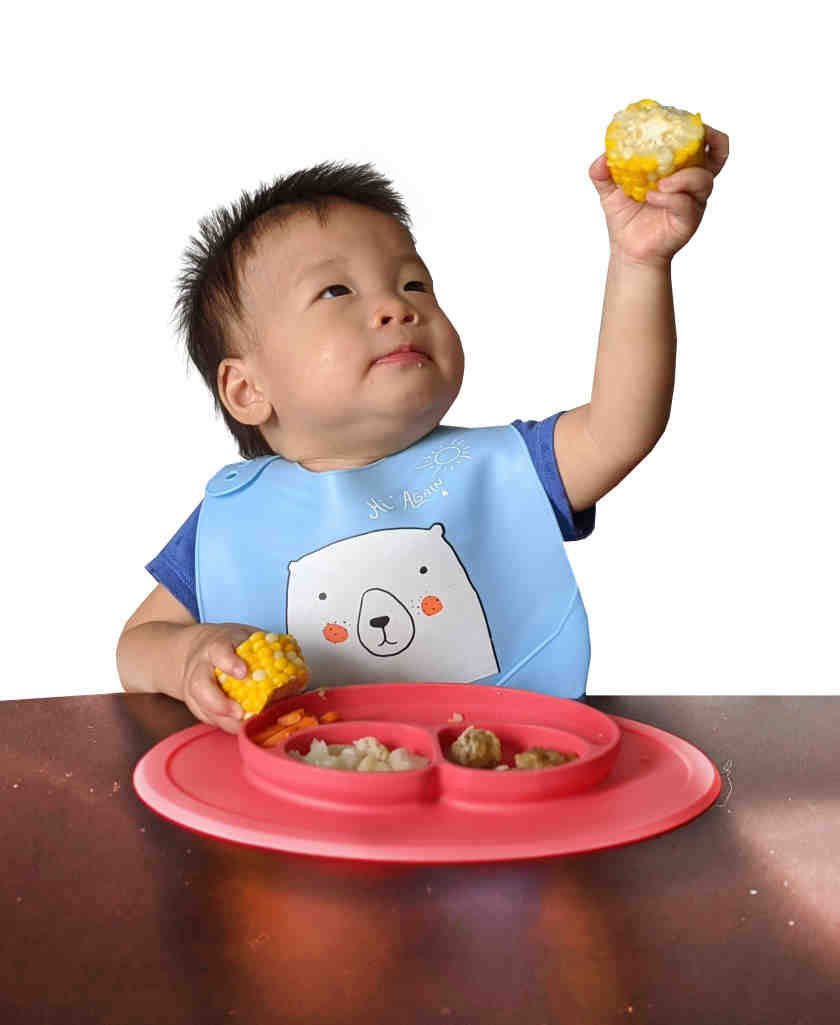Picture this: dinnertime, the centerpiece of your family’s day, descends into chaos. Your three-year-old, who moments ago was happily digging into their spaghetti, suddenly decides to launch a well-aimed chunk of marinara-covered pasta towards the far corner of the room. You’re left staring at the mess, wondering if sanity (and your sanity) will ever return. You’re not alone. It’s a common experience for many parents of toddlers, and while it can be incredibly frustrating, it’s important to remember that there’s a reason behind this seemingly erratic behavior.

Image: solidstarts.com
This article will delve into the world of the “food flinging” toddler, unraveling the reasons behind this behavior and exploring effective strategies to deal with it. We’ll address the developmental milestones at play, the emotional factors involved, and offer practical advice for parents who are navigating this messy, yet necessary, stage of childhood development.
Exploring the Roots of Food Flinging
The act of throwing food isn’t simply an act of defiance or a desire to annoy you. It’s a complex interplay of various factors, rooted in a toddler’s developing world. Here’s a deeper look at some key contributors:
1. Motor Skills Development
Toddlers are little scientists, constantly exploring their world through their senses. They’re fascinated by cause and effect, and throwing food is a way to experiment with the physics of objects. The satisfaction of seeing something fly through the air, the satisfying thud as it hits the ground – these are intriguing discoveries for a little one who is just beginning to understand the world around them.
2. Sensory Play
Food is a sensory experience! The textures, smells, and tastes are all part of the exploration. Your toddler might be curious about how different foods feel when they’re squished, thrown, or dropped. This sensory play is essential for their cognitive development.

Image: www.whattoexpect.com
3. Testing Boundaries
As toddlers begin to develop their own sense of independence, they’ll test boundaries to understand what they’re allowed to do. Throwing food can be a way for them to exert control and see how you react. They might be testing your limits to see how far they can push them.
Tackling the Food Flinging: Practical Strategies for Parents
Dealing with a food-flinging toddler can be challenging, but here are some effective approaches:
1. Stay Calm and Consistent
Avoid overreacting or getting overly frustrated, as this can escalate the situation. Try to remain calm and consistent in your reactions. A simple “No, we don’t throw food” coupled with a firm but gentle removal of the offending item can be effective.
2. Redirect and Distract
Instead of focusing on the negative behavior, try redirecting your child’s attention to something more positive. Offer them an alternative activity, like playing with toys, drawing, or reading a book. This can help to shift their focus away from the food and onto something more engaging.
3. Keep Mealtimes Fun and Engaging
Make meal times enjoyable for your little one. Involve them in the food preparation, let them choose what they want to eat, and allow them to participate in the process. Try using colorful plates and serving foods in different shapes, which can stimulate their interest.
4. Offer Different Portion Sizes
Instead of placing a large portion of food in front of your child, offer smaller amounts. This can help prevent them from feeling overwhelmed and gives them the opportunity to ask for more if they are still hungry. This can also help avoid overserving, which can contribute to a tendency to throw food.
5. Set Clear Expectations
Establish clear expectations, and explain to your child that throwing food is not acceptable. Make sure that you are consistent with these expectations and that you follow through with consequences if they are not met. This doesn’t have to be harsh, but it should be firm. A simple time-out or removal from the table can work well.
6. Focus on What They Can Do
Instead of focusing on what your child shouldn’t do, talk to them about what they can do. For example, you could tell them that they can ask for more food if they are hungry or that they can take a break from eating if they are full. This helps them to feel in control and encourages positive behaviors.
7. Talk It Through
If your child is older, try asking them why they are throwing food. Sometimes there’s an underlying cause, such as frustration or boredom. Once you understand the root of the problem, you can begin to address it.
8. Be Patient and Persistent
Remember that all children develop at their own pace, and food throwing is a normal phase that most toddlers go through. Be patient and persistent, and eventually, your child will outgrow this behavior.
3 Year Old Throwing Food On Floor
Food Flinging: A Milestone on the Path to Independence
It’s important to remember that food flinging, while messy and frustrating, is a part of your child’s development. They are trying to understand their world, test their limits, and express themselves. By understanding this behavior and using these strategies, you can not only navigate this stage with patience, but also help your child learn valuable lessons about self-control and respecting others.
As you continue to guide your child through this phase, remember to celebrate their small wins. When they show even a bit of restraint, acknowledge it with encouragement and praise. It’s a journey, and you’re both in it together. So, keep your sense of humor, and remember that the food flinging stage, like most toddler phases, will eventually pass (and the carpet will be cleaned!).






